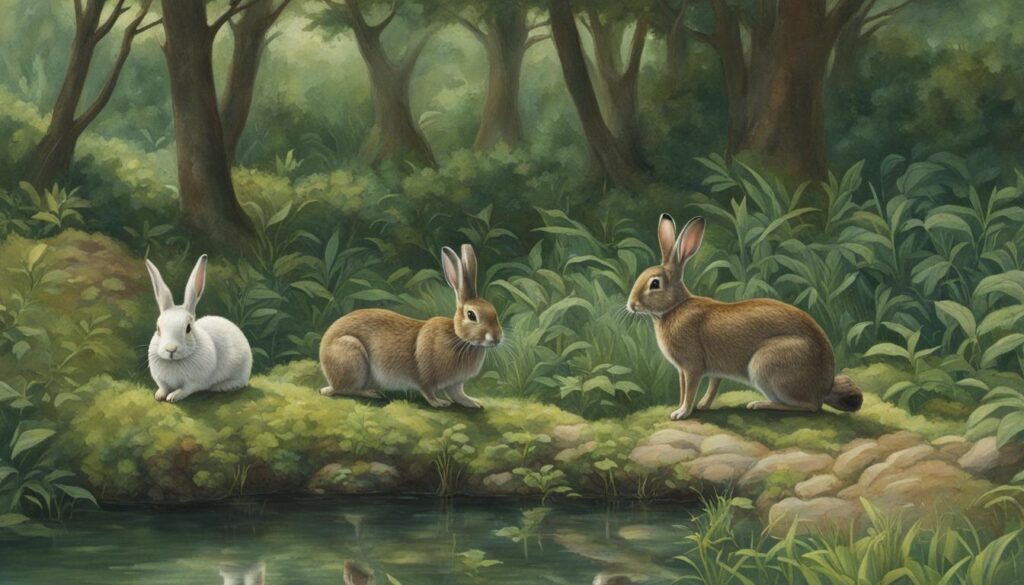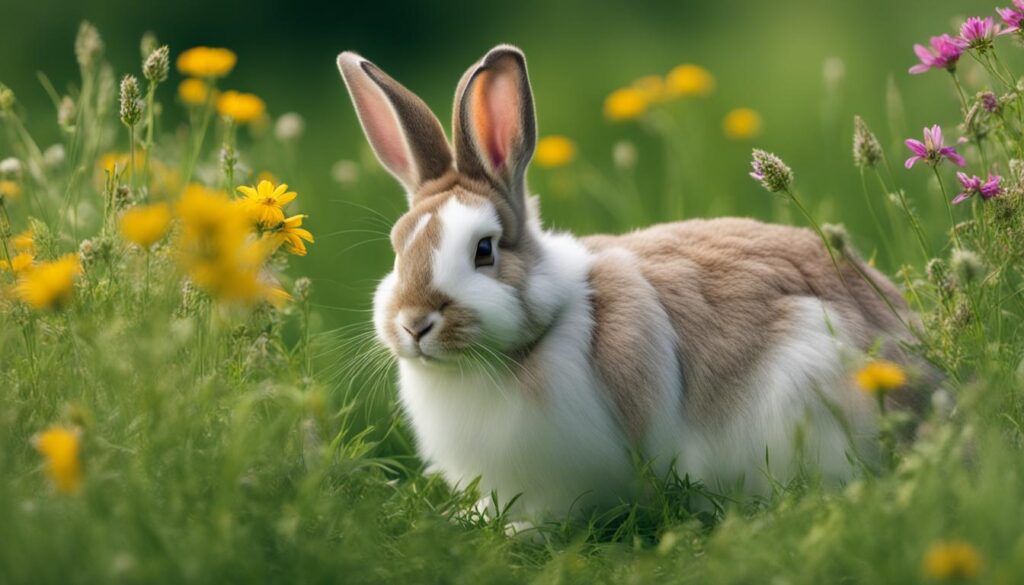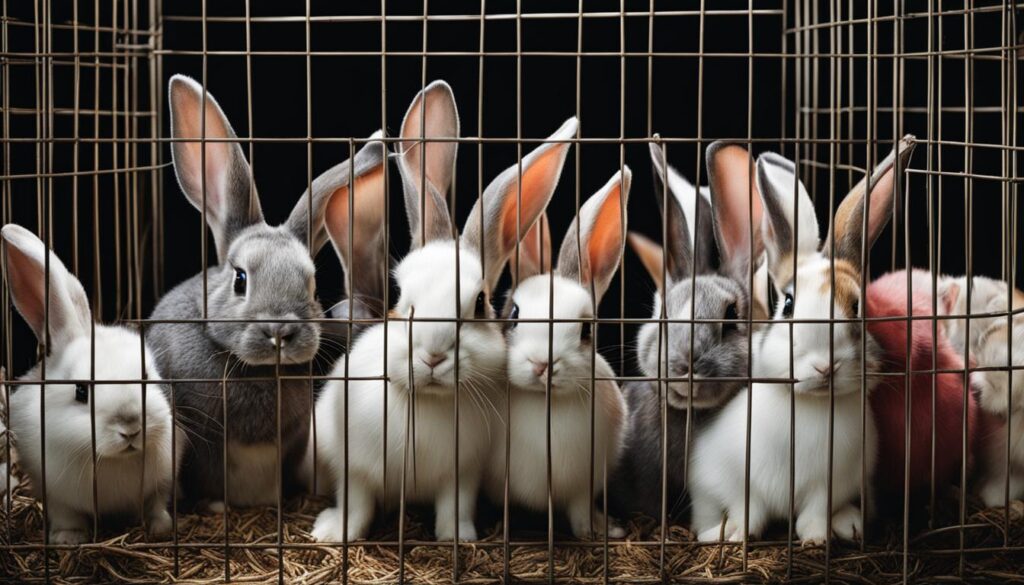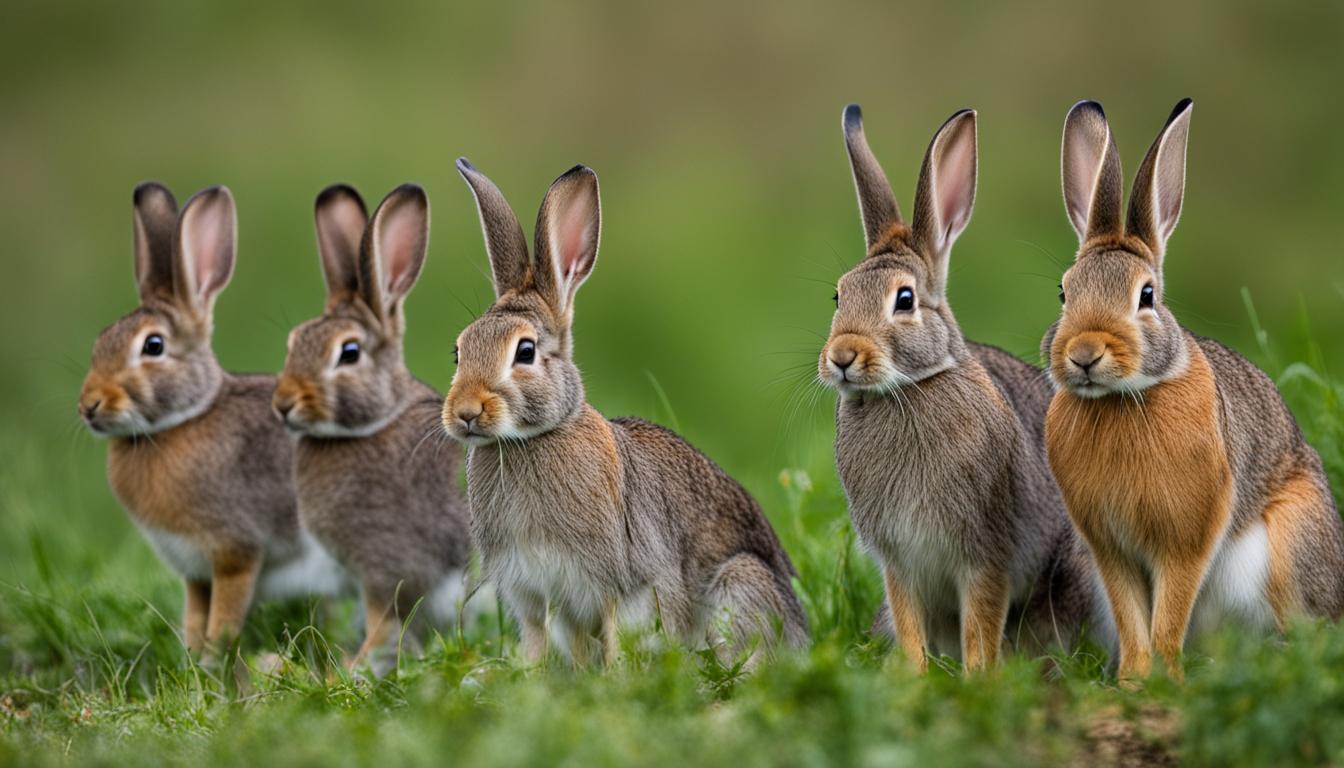The Fascinating Journey: From Wild to Wonderful Pets – The History of Domestic Rabbits
Discover the captivating story behind the history and domestication of rabbits, from their wild origins to becoming beloved pets. Unravel the mysteries surrounding the evolution of different rabbit breeds and the complex process of rabbit domestication. Let’s dive into the intriguing world of these furry companions and uncover the secrets of their past!
Key Takeaways:
- The domestication of rabbits is a result of various social trends and interactions between humans and rabbits over time.
- Rabbit domestication cannot be attributed to a single event and is a cumulative effect of hunting, transportation, and keeping them as domestic pets.
- The timing of rabbit domestication remains a topic of debate due to conflicting information from different dating methods and genetic testing.
- Archaeological evidence shows rabbits being hunted during the Palaeolithic era, but visible differences between wild and domestic rabbits took thousands of years to develop.
- Understanding the history of domestic rabbits can deepen our appreciation for these wonderful pets and guide responsible rabbit ownership.
The Origin of Domestic Rabbits: Debunking Myths
Contrary to popular belief, the origin of domestic rabbits cannot be traced back to a papal decree in 600 A.D. This widely held myth has been debunked through thorough research and analysis of historical documents and archaeological remains. The notion of a papal decree was based on a misinterpretation of a 584 A.D. document by St. Gregory of Tours.
Genetic analysis provides further evidence that the divergence between wild and domestic rabbits occurred thousands of years prior to the supposed decree. By studying the genetic makeup of modern rabbit populations and comparing them to their wild ancestors, scientists have been able to trace the complex process of rabbit domestication. The genetic analysis undermines the credibility of the papal decree and highlights the need to critically assess historical accounts.
“There is no evidence to support the myth of a papal decree in 600 A.D. It is crucial to separate fact from fiction and rely on scientific evidence and historical accuracy.” – Dr. Elizabeth Anderson, Geneticist
Archaeological remains and fossil evidence also contribute to our understanding of rabbit domestication. The discovery of ancient rabbit bones in human settlements provides valuable insight into the timeline of their domestication. These remains show gradual changes in rabbit morphology and indicate long-term interactions between humans and rabbits.
By debunking the myth of a papal decree, genetic analysis, historical documents, and archaeological remains shed light on the true origins of domestic rabbits. It emphasizes the necessity of critically evaluating historical accounts and relying on scientific evidence to unravel the complex history of human-animal interactions.

| Myth | Reality |
|---|---|
| Domestication originated from a papal decree in 600 A.D. | No evidence of a papal decree exists, and genetic analysis suggests domestication occurred much earlier. |
| Basilea of France requested rabbits from Pope Gregory I in 585 A.D. | No such request is documented in historical records. |
| St. Gregory of Tours misinterpreted a document, leading to the myth of a papal decree. | St. Gregory of Tours did misinterpret a 584 A.D. document, contributing to the myth. |
| The split between wild and domestic rabbits occurred as a result of the decree. | Genetic analysis shows the divergence predates the supposed decree. |
Documentary Insights into the Lives of Rabbits
Several documentaries provide valuable insights into the behavior, challenges, and conservation of rabbits. These films offer a glimpse into the lives of rabbits, showcasing their unique characteristics and survival strategies. Through captivating storytelling and breathtaking visuals, these documentaries shed light on the fascinating world of rabbits and their importance in the ecosystem.
The Burrowers: Animals Underground – Baby Rabbits
This documentary delves into the remarkable bond and survival strategies of baby rabbits living underground. It explores their unique behaviors and the challenges they face as they navigate their way through the world. Through intimate footage and expert commentary, viewers gain a deeper understanding of the complex social dynamics and instinctual behaviors that contribute to the survival of these adorable creatures.
Secret Life of Marsh Rabbits Documentary
This documentary takes a closer look at the behaviors and habits of marsh rabbits in their natural habitat. Viewers are treated to rare footage of these elusive rabbits as they navigate through wetlands and marshes. The film provides valuable insights into the unique adaptations and territorial behaviors of marsh rabbits, highlighting their crucial role in maintaining the delicate balance of their ecosystem.
Remarkable Rabbits
Through captivating storytelling and stunning visuals, this documentary showcases the intelligence and resourcefulness of rabbits. Viewers witness the remarkable problem-solving skills and agility of rabbits as they overcome various challenges in their environment. From acrobatic leaps to intricate burrow systems, this film highlights the incredible adaptability of rabbits and their unparalleled ability to thrive in diverse habitats.
These Endangered Rabbits Live On The Slope Of A Mexican Volcano
Highlighting the struggles and conservation efforts of volcano rabbits, this documentary sheds light on the importance of preserving these endangered species. Viewers gain a deeper understanding of the threats faced by volcano rabbits and the dedicated individuals working tirelessly to protect their habitat. This film serves as a call to action for rabbit conservation and emphasizes the need to preserve the delicate balance of our ecosystems.
These documentaries provide a captivating and informative look into the lives of rabbits, from their unique behaviors to the challenges they face in their natural habitats. By raising awareness about rabbit conservation and preservation, these films play a crucial role in advocating for the survival of these remarkable creatures.

The Dark Side of Rabbit Breeding
Rabbit breeding is a popular practice, but it’s important to acknowledge the dark side of this industry. Large-scale rabbit farming and profit-driven breeding practices can have serious consequences for the welfare of these animals. Documentaries provide valuable insights into the realities of rabbit breeding and the efforts of rabbit rescues to save and protect these vulnerable creatures.
One of the main issues with rabbit breeding is the existence of large-scale rabbit farms. These farms prioritize quantity over quality, often compromising the well-being of the rabbits involved. The animals are raised in crowded conditions, lacking the space and enrichment necessary for a healthy and fulfilling life. Stress, disease, and genetic issues are common in such environments.

Rabbit farming also raises ethical concerns. Breeding rabbits solely for profit not only disregards the individual needs and welfare of these animals but also contributes to the overpopulation problem. When rabbits are bred in large numbers without proper planning, it often leads to abandoned or neglected rabbits becoming a burden on animal shelters and rescue organizations.
Documentaries that shed light on these issues play an important role in raising awareness and advocating for responsible breeding practices. By highlighting the challenges faced by rabbits in the breeding industry, these films encourage viewers to consider the ethical implications of supporting large-scale rabbit farming.
“The welfare of animals should always be a priority. Responsible breeding practices and supporting rabbit rescues can make a significant difference in improving the lives of these magnificent creatures.”
Responsible rabbit breeding focuses on the well-being and health of the animals rather than profit. It involves careful selection of breeding pairs, proper living conditions, and responsible selling practices. Rabbit rescues work tirelessly to provide a safe haven for abandoned or mistreated rabbits, offering them a chance at a better life.
The Reality of Rabbit Farming
To better understand the dark side of rabbit breeding, let’s take a closer look at the realities of rabbit farming:
| Issue | Impact |
|---|---|
| Lack of space and enrichment | Increased stress, susceptibility to disease, and behavioral issues. |
| Inbreeding and genetic problems | Higher risk of health issues, reduced vitality, and shortened lifespans. |
| Overpopulation and abandoned rabbits | Strain on animal shelters and rescues, leading to higher euthanasia rates. |
| Health and welfare neglect | Failure to provide necessary medical care, resulting in suffering and premature death. |
Rabbit breeding should prioritize the well-being of the animals involved and promote responsible ownership. By supporting ethical breeders and adopting from reputable rescues, you can contribute to the well-being of these beloved pets and help address the dark side of rabbit breeding.
The Appeal of Keeping Pet Rabbits
Keeping pet rabbits has its appeal. These furry companions are popular as pets for several reasons. Rabbits are known for their adorable appearance, gentle temperament, and unique behavior. They are often viewed as charming and friendly pets, making them a popular choice for both individuals and families.
Rabbits come in different breeds and species, each with its own unique characteristics and care requirements. Whether you’re interested in a small and compact dwarf rabbit or a larger breed like the Flemish Giant, there is a rabbit breed that will suit your preferences.
Rabbit Breeds
There are numerous rabbit breeds to choose from, each with its own distinctive traits. Here are a few popular rabbit breeds:
| Breed | Description |
|---|---|
| Dutch Rabbit | A small to medium-sized breed recognized for its distinct markings and friendly disposition. |
| Lionhead Rabbit | A breed known for its adorable fluffy mane, Lionhead rabbits are friendly and make great companions. |
| Holland Lop | The Holland Lop is a compact breed with floppy ears, making them incredibly cute and cuddly. |
| Flemish Giant | Known as the largest domestic rabbit breed, the Flemish Giant is gentle, calm, and has a docile nature. |
Choosing the right breed is an important part of keeping pet rabbits. It’s essential to consider factors such as size, temperament, and maintenance requirements to ensure a compatible and enjoyable experience as a rabbit owner.
Rabbit Care
Caring for pet rabbits involves providing them with a suitable habitat, a balanced diet, regular exercise, and plenty of love and attention. Understanding their specific needs is crucial to ensure their health and well-being.
“Rabbits are social animals and thrive on interaction with their owners. Spend time bonding with your pet rabbit through gentle strokes and play sessions.”
To keep your rabbit happy and healthy, make sure to create a safe and comfortable living environment. Provide them with a spacious and secure hutch or cage, along with bedding materials and toys for mental stimulation. Additionally, rabbits require a diet rich in hay, fresh vegetables, and high-quality rabbit pellets.
Documentaries and online resources can provide valuable information for potential rabbit owners. They offer insights into rabbit behavior, care tips, and advice on creating an enriching environment for your furry friend. Whether you’re a first-time rabbit owner or have experience with pets, these resources can help you make informed decisions and ensure the well-being of your pet.
Rabbit Domestication and its Historical Significance
Rabbit domestication holds immense historical significance, shedding light on the deep-rooted human-animal interactions and the process of domestication that has shaped our relationship with these fascinating creatures. By studying the domestication of rabbits, researchers gain valuable insights into the ways in which humans have manipulated the environment throughout history.
The domestication process is a complex and gradual one, challenging the notion of tidy origin stories. It involves a combination of genetic changes, physical traits, and the interactions between humans and wild animals. Understanding these complexities helps us appreciate the gradual nature of scientific discoveries, highlighting the gradual evolution from wild animals to the wonderful pets we know today.
By observing the domestication of rabbits, we can better understand the profound impact that humans have had on the environment. Historically, humans have manipulated their surroundings to provide a hospitable environment for the domestication and breeding of rabbits. This manipulation of the environment showcases our innate ability to shape and transform the natural world to suit our needs.
“The significance of rabbit domestication lies not only in the companionship and joy they bring as pets, but also in the insights it offers into the intricate dynamics between humans, animals, and the environment.” – Dr. Amelia Thompson, Rabbit Historian
The historical significance of rabbit domestication extends beyond the realm of biology and genetics. It provides a unique lens through which we can examine the socio-cultural aspects of human societies and their intricate relationship with animals. From ancient civilizations using rabbits for hunting and transportation to the modern-day practice of responsible rabbit breeding, the domestication of rabbits reflects our complex and evolving relationship with the natural world.
With each passing era, the significance of rabbit domestication becomes more apparent. It serves as a testament to the interconnectedness of humans and animals and highlights our ability to shape and adapt the environment to meet our needs. Through studying the domestication process of rabbits, we gain a deeper understanding of our own historical journey and the profound impact we have had on the world around us.
The Continuum of Domestication
Rabbit domestication is not a singular event but rather a continuum that spans thousands of years. It involves intricate interactions between humans and rabbits, resulting in genetic changes and the emergence of physical traits that distinguish domesticated rabbits from their wild counterparts.
Throughout history, humans have selectively bred rabbits for desired traits, such as size, color, and docility. This human-driven selection has played a crucial role in shaping the diversity of rabbit breeds we see today. It is a testament to our ability to manipulate and mold the natural world to suit our preferences.
| Key Factors in Rabbit Domestication | Description |
|---|---|
| Human-Animal Interactions | The bond between humans and rabbits has evolved over time, from utilizing rabbits for resources to the companionship and admiration they offer as pets. |
| Genetic Changes | The domestication process has resulted in genetic variations within rabbit populations, leading to distinct traits and characteristics. |
| Physical Traits | Rabbits bred for specific traits exhibit physical variations, such as size, coat color, and behavioral tendencies. |
| Environment Manipulation | Humans have created artificial environments conducive to rabbit domestication, ranging from warrens to domestic habitats. |
Conclusion
The history of domestic rabbits is a captivating tale that combines historical records, genetic analysis, and archaeological evidence. The domestication of rabbits is a intricate process with no single definitive event. Instead, it is a gradual result of social trends and human-rabbit interactions over time. Understanding the history and domestication of rabbits not only fosters a deeper appreciation for these delightful pets but also serves as a guide for responsible rabbit ownership.
Throughout history, the journey of rabbits from the wild to becoming beloved pets has been shaped by various factors. The Romans’ documented use of hutches and the discovery of Paleolithic-era rabbit hunting illustrate early human interactions with rabbits. Over thousands of years, changes in the structure of rabbit bones gradually reflected the differences between wild and domesticated rabbits.
Today, keeping pet rabbits is a popular choice for many. With numerous rabbit breeds and species to choose from, each with its own distinctive characteristics, prospective rabbit owners can find the perfect companion. Learning about rabbit care, from providing a suitable habitat to understanding their dietary needs, is crucial for ensuring the well-being of these furry friends.
The history and domestication of rabbits provide valuable insights into the connection between humans and animals. By appreciating the intricate process of domestication, we come to understand the influence of social and environmental factors on the development of different species. With this knowledge, we can create a harmonious and fulfilling relationship with our pet rabbits, ensuring their happiness and thriving.
FAQ
When did the domestication of rabbits begin?
The domestication of rabbits has a complex and elusive history. Various dating methods and genetic testing have provided conflicting information about the timing of rabbit domestication.
What is the earliest written record of rabbits?
The Romans were credited with the earliest written records of rabbits and the use of hutches.
Are there any archaeological evidence of rabbits being hunted?
Yes, archaeological evidence shows rabbits being hunted during the Palaeolithic era.
How long did it take for differences between wild and domestic rabbits to be visible?
It took over 2,000 years for differences between wild and domestic rabbits to be visible in their bones.
Is it true that rabbit domestication originated from a papal decree in 600 A.D.?
No, the popular myth of rabbit domestication originating from a papal decree in 600 A.D. has been debunked. There is no evidence of such a decree, and the story can be traced back to a misinterpretation of a 584 A.D. document by St. Gregory of Tours.
What do documentaries reveal about the lives of rabbits?
Documentaries such as “The Burrowers: Animals Underground – Baby Rabbits,” “Secret Life of Marsh Rabbits Documentary,” “Remarkable Rabbits,” and “These Endangered Rabbits Live On The Slope Of A Mexican Volcano” offer glimpses into the behavior, survival strategies, conservation efforts, and challenges faced by rabbits.
What is the dark side of rabbit breeding?
The dark side of rabbit breeding involves issues such as large-scale rabbit farming and the realities of breeding rabbits for profit. Documentaries shed light on these challenges faced by rabbits in such breeding practices and the efforts of rabbit rescues to save and protect these animals.
Are there different rabbit breeds?
Yes, rabbits come in different breeds and species, each with its own unique characteristics and care requirements.
What can I learn from rabbit documentaries?
Rabbit documentaries can provide valuable information about rabbit care, behavior, and specific breed characteristics, helping potential owners make informed decisions about bringing a pet rabbit into their homes.
What insights does the domestication of rabbits provide?
The domestication of rabbits has historical significance as it provides insights into human manipulation of the environment throughout history. Understanding the complexities of domestication helps researchers appreciate the gradual nature of scientific discoveries and challenges the notion of tidy origin stories.
What is the history of domestic rabbits?
The history of domestic rabbits is a fascinating journey that involves a combination of historical records, genetic analysis, and archaeological evidence. The domestication of rabbits is a complex process that cannot be attributed to a single event.


